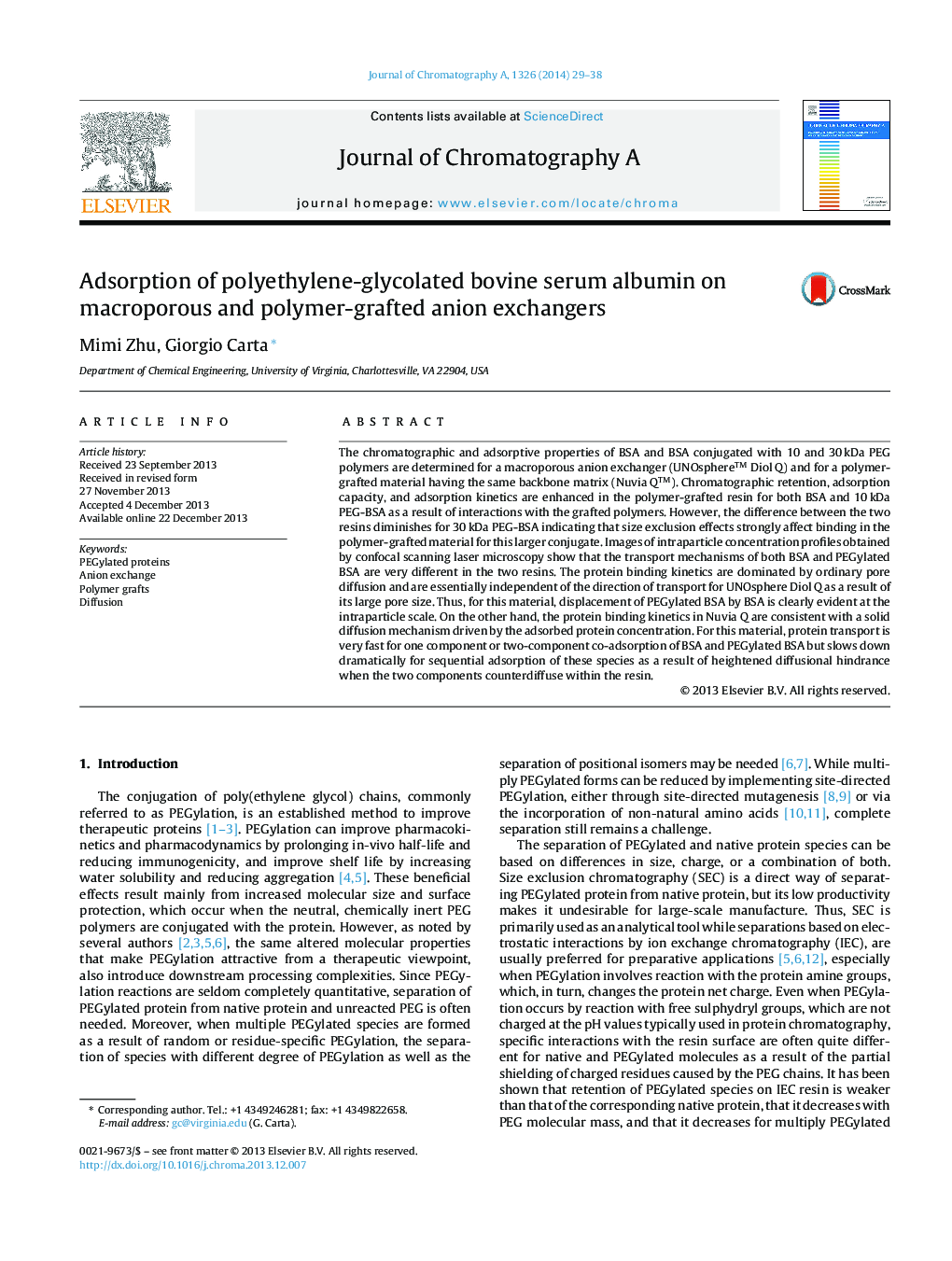| Article ID | Journal | Published Year | Pages | File Type |
|---|---|---|---|---|
| 1200783 | Journal of Chromatography A | 2014 | 10 Pages |
•PEGylation of BSA reduces AEX binding capacity and kinetics.•Polymer-grafted AEX resin enhances capacity and kinetics.•BSA and PEG-BSA transport mechanisms in AEX are explained.•CLSM demonstrates displacement of PEG-BSA by BSA.
The chromatographic and adsorptive properties of BSA and BSA conjugated with 10 and 30 kDa PEG polymers are determined for a macroporous anion exchanger (UNOsphere™ Diol Q) and for a polymer-grafted material having the same backbone matrix (Nuvia Q™). Chromatographic retention, adsorption capacity, and adsorption kinetics are enhanced in the polymer-grafted resin for both BSA and 10 kDa PEG-BSA as a result of interactions with the grafted polymers. However, the difference between the two resins diminishes for 30 kDa PEG-BSA indicating that size exclusion effects strongly affect binding in the polymer-grafted material for this larger conjugate. Images of intraparticle concentration profiles obtained by confocal scanning laser microscopy show that the transport mechanisms of both BSA and PEGylated BSA are very different in the two resins. The protein binding kinetics are dominated by ordinary pore diffusion and are essentially independent of the direction of transport for UNOsphere Diol Q as a result of its large pore size. Thus, for this material, displacement of PEGylated BSA by BSA is clearly evident at the intraparticle scale. On the other hand, the protein binding kinetics in Nuvia Q are consistent with a solid diffusion mechanism driven by the adsorbed protein concentration. For this material, protein transport is very fast for one component or two-component co-adsorption of BSA and PEGylated BSA but slows down dramatically for sequential adsorption of these species as a result of heightened diffusional hindrance when the two components counterdiffuse within the resin.
